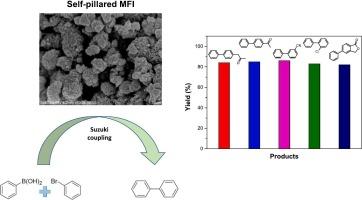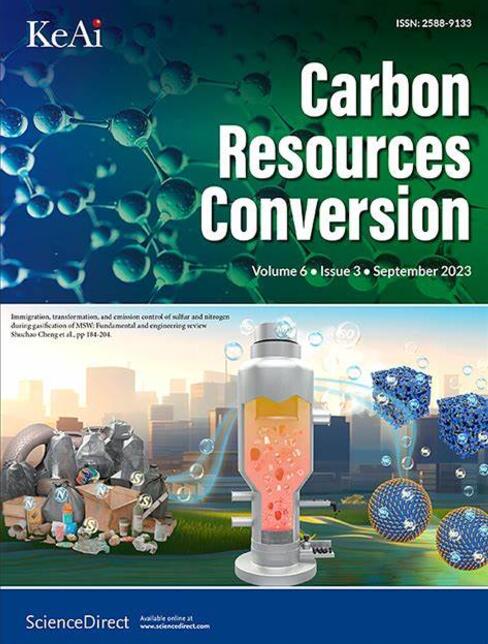Self-pillared hierarchical Silicalite-1 zeolites for enhanced Suzuki-Miyaura coupling reactions
IF 7.5
3区 环境科学与生态学
Q2 ENERGY & FUELS
引用次数: 0
Abstract
The Suzuki coupling reaction is a widely employed technique for the synthesis of biaryl compounds in various disciplines. This study introduces the development of a highly efficient and recyclable palladium-doped Silicalite-1 (S-1) catalyst featuring a hierarchical structure, which enhances the efficacy of Suzuki coupling reactions. By utilizing tetra-n-butylphosphonium hydroxide as a structure-directing agent and adjusting the molar ratios of ethanol and water in the synthetic precursor, we successfully produced a range of porous S-1 catalysts. These catalysts displayed a unique architecture characterized by interconnected thin pillars or lamellae. The catalyst’s remarkable specific activity facilitated rapid Suzuki coupling reactions, completing within just three hours under environmentally benign conditions. The Suzuki reaction mechanism was discussed, which involves an oxidative addition of bromobenzene to heterogeneous Pd, followed by metal exchange with phenyl boronic acid and completed by a reductive elimination. Comprehensive substrate screening, selectivity assessments, and recycling studies were also undertaken.

增强Suzuki-Miyaura偶联反应的自柱状分层硅石-1沸石
铃木偶联反应是合成联芳基化合物的一种广泛应用的技术。本研究介绍了一种高效、可回收的掺杂钯硅-1 (S-1)催化剂的开发,该催化剂具有层次化结构,提高了铃木偶联反应的效率。利用四正丁基氢氧化磷作为结构导向剂,调节前驱体中乙醇和水的摩尔比,成功制备了一系列多孔S-1催化剂。这些催化剂表现出独特的结构特征,即相互连接的薄柱或薄片。催化剂显著的比活性促进了快速的铃木偶联反应,在无害环境的条件下,仅需3小时即可完成。讨论了溴苯氧化加成非均相钯,与苯硼酸进行金属交换,并通过还原消除完成的铃木反应机理。还进行了全面的底物筛选、选择性评估和回收研究。
本文章由计算机程序翻译,如有差异,请以英文原文为准。
求助全文
约1分钟内获得全文
求助全文
来源期刊

Carbon Resources Conversion
Materials Science-Materials Science (miscellaneous)
CiteScore
9.90
自引率
11.70%
发文量
36
审稿时长
10 weeks
期刊介绍:
Carbon Resources Conversion (CRC) publishes fundamental studies and industrial developments regarding relevant technologies aiming for the clean, efficient, value-added, and low-carbon utilization of carbon-containing resources as fuel for energy and as feedstock for materials or chemicals from, for example, fossil fuels, biomass, syngas, CO2, hydrocarbons, and organic wastes via physical, thermal, chemical, biological, and other technical methods. CRC also publishes scientific and engineering studies on resource characterization and pretreatment, carbon material innovation and production, clean technologies related to carbon resource conversion and utilization, and various process-supporting technologies, including on-line or off-line measurement and monitoring, modeling, simulations focused on safe and efficient process operation and control, and process and equipment optimization.
 求助内容:
求助内容: 应助结果提醒方式:
应助结果提醒方式:


